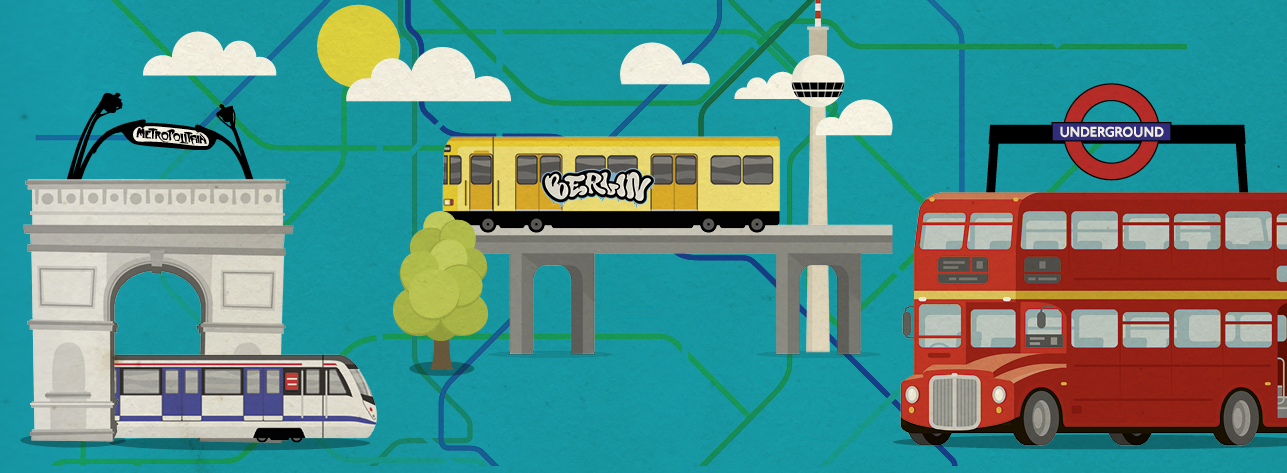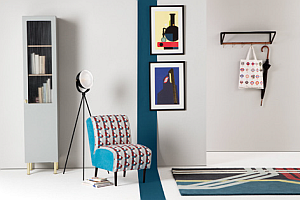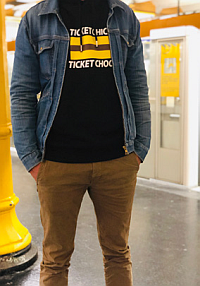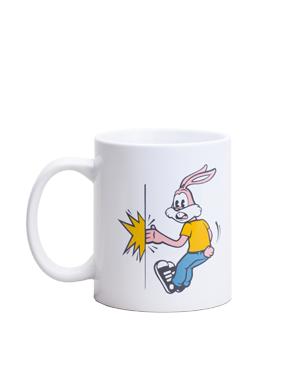Without them Europe’s metropolises would literally come to a standstill: Buses, tubes, trams & co. define the everyday lives of millions of inhabitants, characterise the cityscape and the experience of countless visitors and tourists. It is therefore no wonder that many transport companies heavily rely on haptic ambassadors for their branding and customer loyalty activities. A model for the future in spite of immense losses during the Corona crisis.

There are numerous songs about them, films or books in which they play a role. They are often unpunctual, dirty and crowded, one involuntarily spends many hours of one’s valuable lifetime in them – and yet nothing would work without them: Public means of transport move people – both literally and figuratively speaking. There is hardly a metropolis that has been shaped to such a considerable extent by its transport than London. According to Transport for London (TfL), the transport company of the British capital, in the fiscal year 2018/19 more than 1.3 billion journeys took place on the London underground alone. The “tube” is not only the oldest underground network in the world – the first line, the Metropolitan Railway, went into operation in 1863 already – at the same time it also boasts the most striking branding. The “Underground” roundel logo that was introduced in 1919 is famous all over the globe, together with the distinctive route network map, which lends the “tube” its name and which was voted the second most popular British design in 2012 according to a survey carried out by the BBC and the London Transport Museum. And whilst many metropolises were still occupied with developing a local transport network at all – the first underground train didn’t start operating in Madrid until 1919 and indeed in Munich the first tube didn’t get underway until 1972 – on the Thames one was already thinking about creating a consistent brand identity: The characteristic, sans serif typeface, Johnston Monotype, was developed in 1916 and has been used for all communications for the London means of transport up until this very day – from station and notification signs, to posters and route maps, through to print media and website presences.
Hence it is not surprising that the London transport company, which has been organised under the umbrella organisation TfL since 2000, has been active on the merchandising front for many decades. For many transport companies London was and still is a benchmark in terms of its marketing. “London Transport and its predecessor, the Underground Group of companies, sold posters and large maps to the public from some time in the 1920s,” Mike Walton, Head of Trading at the London Transport Museum, said. “The first tentative forays into merchandising with souvenirs began in the 1960s and stepped up in volume in the mid-1970s when it became clear that many private companies were using the organisation’s property to sell cheap merchandise without any of the benefit of the sales passing back.” Today, souvenirs carrying the London Underground signet are omnipresent in the city and are considered to be one of the most popular keepsakes. TfL also earns on the sales of the souvenirs. In the fiscal year 2018/19, the transport company made a turnover of 2.9 million pounds with merchandising items – around 7% more than in the previous year – and this only considers the most important touchpoints: these are on the one hand the joint online shop, which TfL and its subsidiary, the London Transport Museum, operate. The shop in the London Transport Museum in Covent Garden plays a further major role. Tribute is repeatedly paid to it as an outstanding example of a successful museum shop.

From vintage unique specimens to seat pattern furniture, through to one of the largest poster archives in the world: The Transport for London shop and the London Transport Museum set benchmarks.
Sofas, sneakers, electric guitars
Own designs and spectacular product developments are like a common thread through the shop’s portfolio. Many of which, according to Walton, “are determined not only by what the market is doing, but also by the key policy initiatives of TfL” – that means when a new bus becomes part of the network, the museum develops corresponding products. Furthermore, the London Transport Museum has one of the largest poster archives in the world comprising of over 5,000 posters, which have been available as reproductions since the 150th anniversary of the tube in 2013. Vintage unique specimens such as bookshelves made from discarded luggage racks of the Metropolitan Line or a sofa, covered with moquette, the characteristic, patterned seat material, which changed hands for a mere 1,760 Pounds (approx. 1,900 Euros) are even more exquisite – and significantly more expensive. Beyond such niche products, more affordable moquette items are among the most popular products sold in the shop – from bags, to wrapping paper, through to cushions. Many spectacular product developments are created to suit current occasions – for example to commemorate the “Transported by Design” exhibition curated by the London Transport Museum, which was on display in the underground station, St. John’s Wood, in 2015, a Fender Stratocaster with an imprinted tube map was designed as a special edition. And the 100th anniversary of the identity-forming Johnson Monotype in the year 2016 was among others celebrated with the NikeLab x Roundel: As one of several cooperations between the transport company and Nike, the sneaker built a bridge between the historical heritage and contemporary street styles and thus reflected the deep connection between the people of London and their public means of transport.
Art nouveau, rabbits and yellow tickets

With a host of witty music videos that presented the characteristic, yellow Paris ticket, the “Ticket Chic/Ticket Choc” campaign advertised local transport as being one’s “second car” in the 1980s. Many products of the RATP La Ligne collection are based on the campaign.
The RATP (Régie autonome des transports Parisiens) is also fully aware of to what extent transport means can characterise a big city and the perception of its inhabitants. The state-operated public transport company in the French capital conveys around 3 billion passengers in the greater area of Paris annually. Like TfL, RATP relies on the heritage of the city’s network for its merchandising. The art nouveau design entrance signs to the metro or the characteristic yellow tickets made of cardboard are just as symbolic for the Parisians – and for visitors to the city – as the Underground Roundel is for the Londoners. At the latest since the “Ticket Chic/Ticket Choc” campaign and the respective song and music video from the 1980s, the yellow tickets have taken on a pop culture status, a first line of promotional products was also created at the time. Familiar designs from several decades of RATP history were the basis for the “RATP La Ligne” collection, which was launched in 2019, to commemorate RATP’s 70th anniversary. The collection is sold via an own online shop. “With its 70 years of presence in Ile-de-France, RATP is celebrating an emblematic anniversary in its history, which of course we want to share with our travellers,” explained Anaïs Lançon, Communications Director at RATP. “Everyone can find a piece of collective heritage in this urban line.” In addition to items in the style of “Metropolitain” signs designed by Hector Guimard, the line-up includes among others T-shirts with “Ticket Chic/Ticket Choc” motifs, drinkware bearing RATP logos of past decades or products decorated with Serge, the rabbit in the collection. An untold number of Parisians grew up with the comic figure, which explained the dangers of the underground to the children.
“The RATP brand has been present in Paris and its region since 1949 and most passengers have grown up with it,” explained Song Phanekham, director of the RATP La Ligne store. “RATP la Ligne is above all a communication project aiming to promote the RATP brand through its strongest symbols, current as well as historical. They participate in strengthening the emotional attachment that passengers have with the RATP. The boutique is also a way for RATP to manage its heritage by overseeing the conception and design of merchandise. New items are regularly added to the collection.” The declared aim is to convey the collective heritage from past memories into the here and now and everyday routine – street instead of museum: “The idea is to communicate the RATP brand through fashionable objects presenting a contemporary interpretation of RATP’s well known symbols and not merely through institutional representation,” added Phanekham. According to the shop manager, although there are no reliable sales figures after just one year, the feedback has been good so far: “The boutique is successful, reaching a wide audience keen about fashion and design, which goes beyond transport enthusiasts. RATP La Ligne items are even featured in public magazines.”
Pandemic emergency stop

Historical logos and “Serge, the rabbit”: The RATP La Ligne collection celebrates the collective heritage of the Métro and co.
Even if many Parisians hold “their” public transport means in high esteem – quite a few of them didn’t want to or weren’t able to use them this year. Corona hit the public transport network hard: For example, RATP is announcing a 224 million Euro loss in turnover for the first six months of 2020 due to the Corona crisis. In London the number of tube passengers fell by 95% at times, the number of bus users by 85% and the London Transport Museum lost 80% of its income after having to close its doors – a deficit of 1.5 million Pounds (approx. 1.65 million Euros) was the consequence of several months without visitors. In spite of these serious financial difficulties, no big city can do without its public transport network, which is why buses, trains and co. will remain to be a model of the future. Haptic advertising has an identity-promoting effect as well as contributing towards customer or passenger loyalty. Not only in London or Paris, but also in many other metropolises – for example in Berlin and Vienna.
// Till Barth
Photos: John Phillips/PA Wire (1); London Transport Museum (1); RATP/Alexandre de Cadoudal (2)





